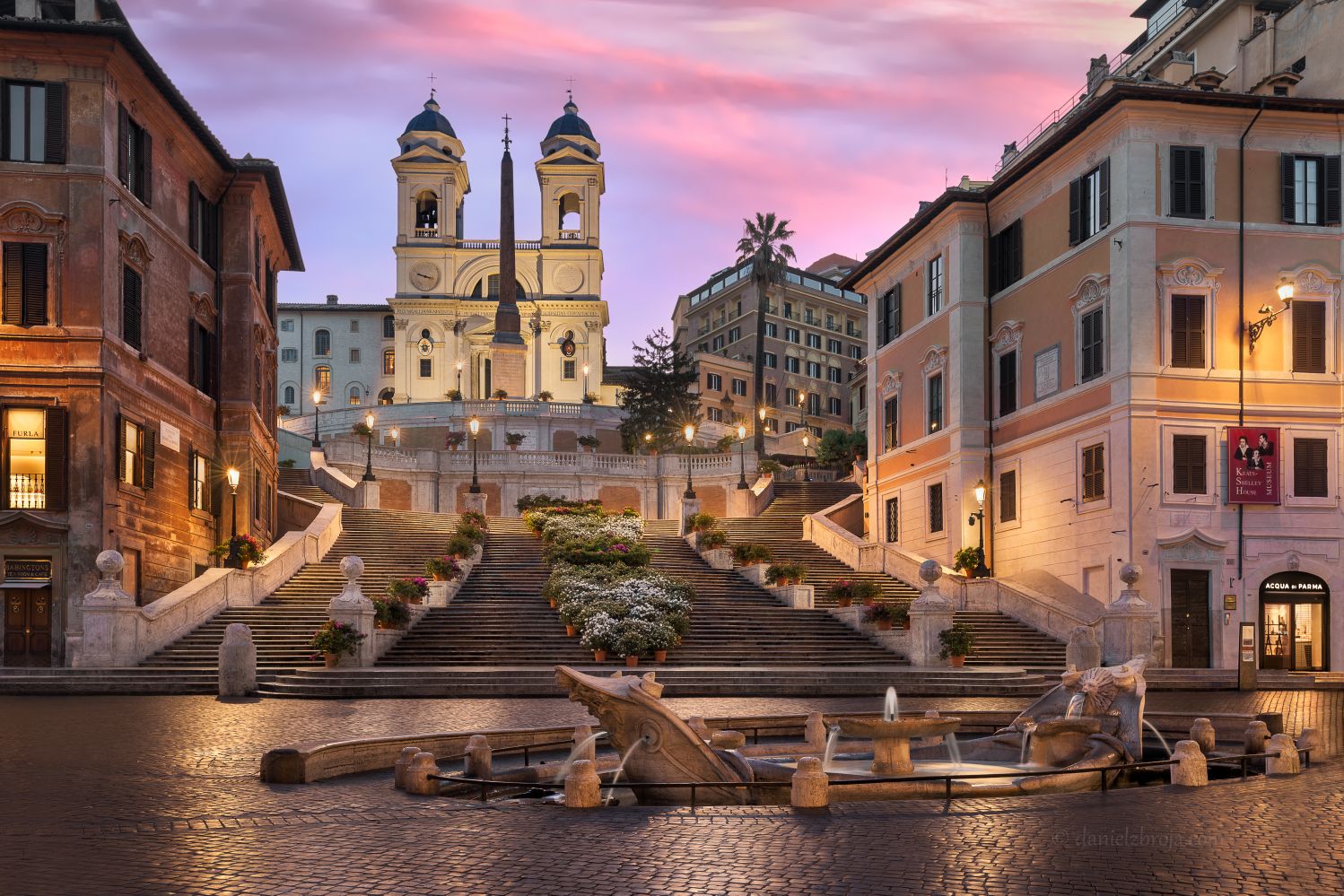
Piazza di Spagna
Rome, Italy
It was built in order to link the Spanish Embassy (the primary site of Spain’s influence in Rome) and the Trinita dei Monti Church (under the patronage of the King of France).
The Spanish embassy was located in the plaza at the base of the steps, so the plaza became the Piazza di Spagna (/“Spanish Square/”). The name then carried over to the steps. The Trinita dei Monti church stands at the top of the steps. With its twin towers, it dominates the skyline. At the end of the fifteenth century, only a small chapel existed on the hill. In 1495, French King Louis XII
commissioned the erection of a new church, replacing the chapel. Construction started in 1502 and dragged on for decades. It was only consecrated in 1585 by Pope Sixtus V. At the corner on the right as one begins to climb the steps, is the house where English poet John Keats lived and died in 1821; it is now a museum dedicated to his memory, full of memorabilia of the English Romantic generation. On the opposite side of the Spanish Steps from John Keats museum are Babington’s Tea Rooms that have been serving English tea for more than a century. The tea shop was set up, in 1893 by two English residents Isabel Cargill and Anna Maria Babington. This was a time when it was only possible to buy tea in pharmacy shops. Babington’s Tea Rooms are now a bit of an instituution and there are restaurant facilities as well. This beautiful place is not only one of Rome’s most popular gathering places, but the steps are also one of the longest and widest staircases in all of Europe.